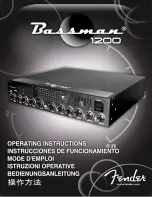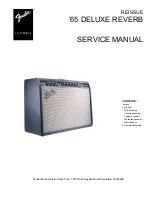
R a d i o S y s t e m s , I n c .
D A - 2 / 4 x 4 a M a n u a l
3 / 0 4
P a g e 1 2
Using Actve Balanced Circuitry
Balanced lines have been used for many years and are in continuing use today because
of their immunity to stray pickup. Induced signals appear on both sides of the balanced
line. The receiving end of the balanced line responds only to the difference voltage
between the lines which is the desired signal. Induced signals are common to both and
are balanced out.
Transformers have been the mainstay of balanced circuitry for decades. Unfortunately,
transformers cause distortion and ringing, and are susceptible to magnetic flux pickup.
Further, good quality audio transformers are very expensive.
The use of op-amp balanced circuitry has the advantage of transformers without the
disadvantages. The only caveat is that careful wiring practices are more important with
active balanced than with transformers.
Active balanced outputs and inputs use three wires: +, -, and ground. The + and -
terminals are both driven and neither should ever be connected to ground. For best
performance, a three-conductor shielded wire should be used. The third wire
completes the ground circuit. The shield should be connected to the ground at one end
of the wire only. If a two-wire shielded cable is used, it is important that a ground
connection be made between the sending and receiving units. A ground circuit through
equipment chassis or through three-prong AC cord ground is also acceptable.
Single-ended audio interconnections lack the interference immunity of balanced hook-
ups. For the reason, keep unbalanced connections short, direct, and well separated
from AC power wires. To drive a single-ended load from an active balanced source, use
coaxial wire: + to center conductor and ground to shield, leaving the - output
unconnected. To feed an active balanced input from a single-ended source, use coaxial
wire, connecting the hot center conductor to +. Connect the shield to ground and put a
jumper from ground to -.
When driving an active balanced input from a transformer balanced floating source, use
two conductor shielded wire. Ground the shield at the source end. Establish good
ground between the chassis either directly or though AC plug ground prongs. At the
load, connect the + lead to the + input and the - lead to the - input. Put two 300 ohm
resistors in series between the + input and the - input and connect their mid-point to the
load ground. This correctly terminates the source output transformer for optimum
frequency and transient response (freedom from ringing) and provides a low impedance
return path for leakage and induced hum. If more than one active balanced load is to be
placed across a floating balanced transformer source, install this resistive termination
once only. From that location to the active balanced loads, run three-conductor shielded
wire, shield continued from the sources chassis, + from +, - from -, and ground from
the mid-point of the terminating resistors.
To drive a balanced floating transformer load from an active balanced source, use
shielded wire. Connect the shield to source ground and leave the shield open at the
load end. C to + and - to -, and establish a good source ground to load chassis
connection, either through a third wire in the interconnect cable or through chassis
contact or AC cord third wire ground.
Interconnections between pieces of stereo equipment require doubling the connections
described above without duplicating the ground connection. Between pieces of active
balanced stereo equipment, then, 5 shielded conductors should be run.
Summary of Contents for DA 2x4a
Page 6: ......
Page 7: ......
Page 8: ...R a d i o S y s t e m s I n c D A 2 4 x 4 a M a n u a l 3 0 4 P a g e 8 Parts Layout Page 1...
Page 9: ...R a d i o S y s t e m s I n c D A 2 4 x 4 a M a n u a l 3 0 4 P a g e 9 Parts Layout Page 2...
Page 10: ...R a d i o S y s t e m s I n c D A 2 4 x 4 a M a n u a l 3 0 4 P a g e 1 0 Parts List...
Page 16: ......


































